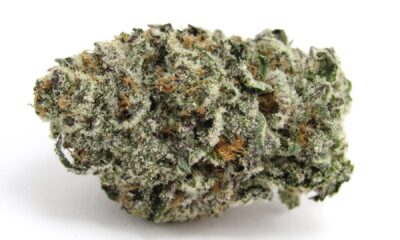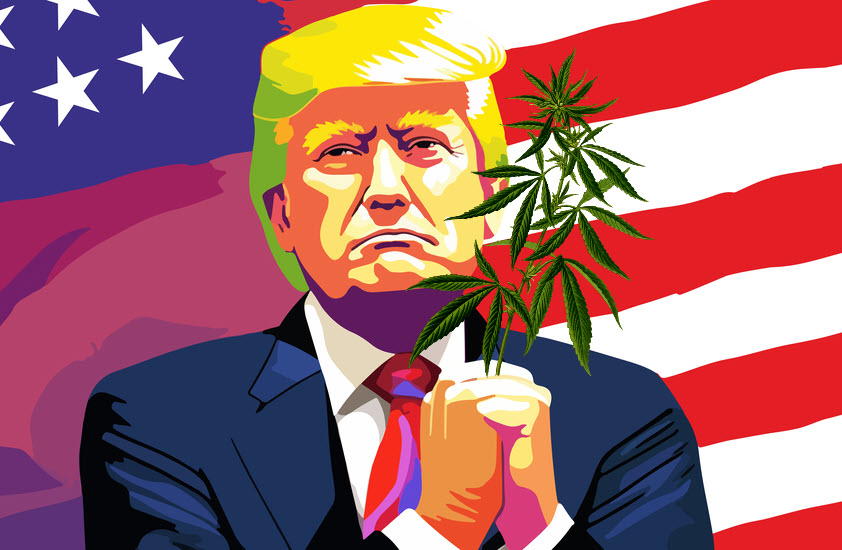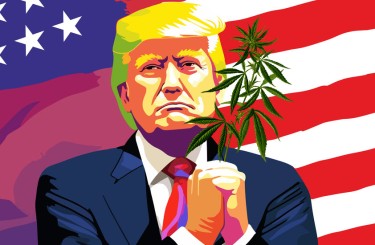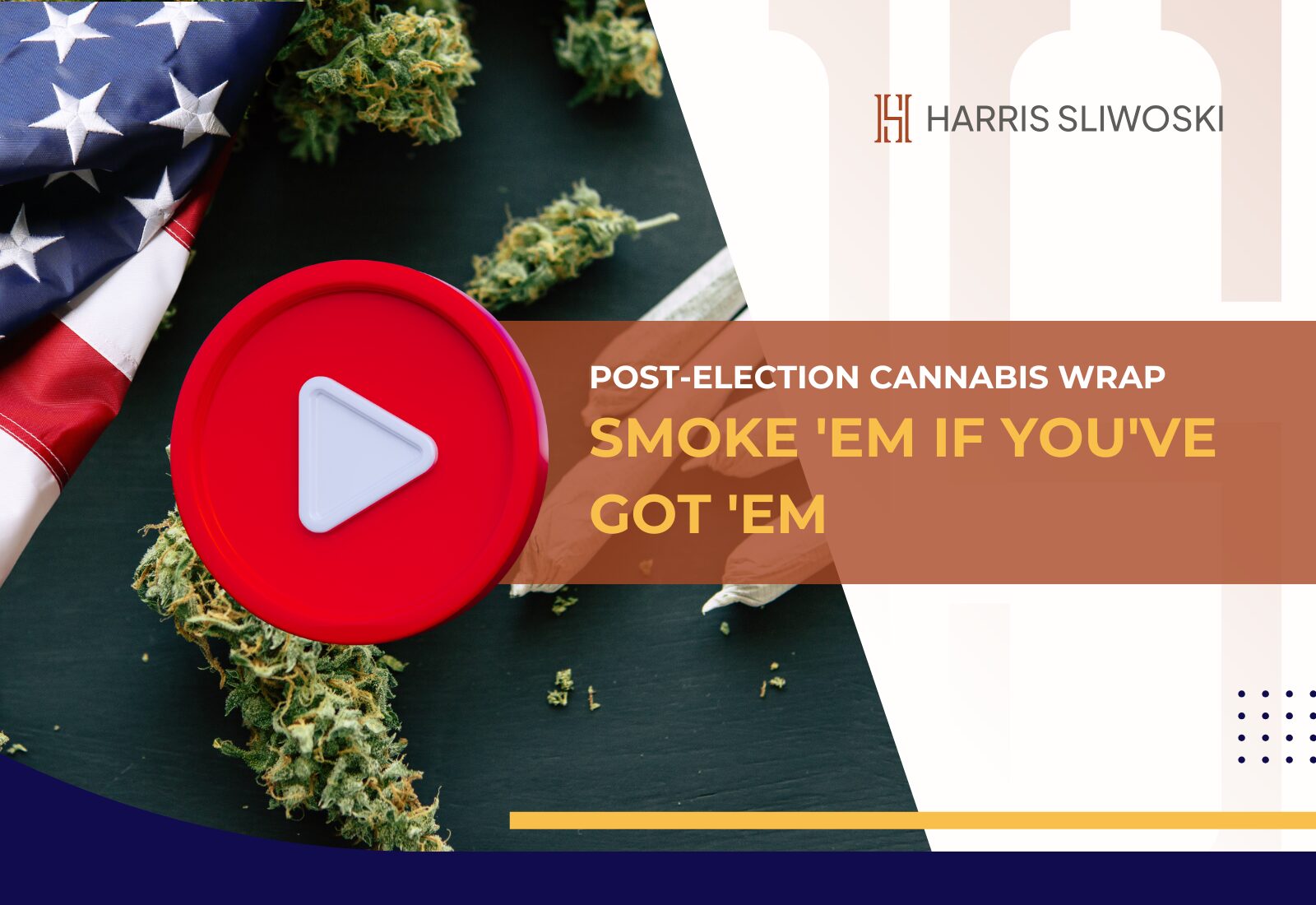Cannabis News
What are Alternatives for Cannabis for ‘At Risk Youth’?
Published
10 months agoon
By
admin

Cannabis Alternatives for “At Risk Youth”
In recent years, mental health has garnered increasing attention and importance, particularly among younger generations. There’s a growing recognition that mental well-being is just as crucial as physical health, and this shift in perspective is reshaping how we approach and manage mental health issues. For those diagnosed with severe mental disorders, such as schizophrenia or other conditions that may induce psychosis, the conversation around marijuana use becomes even more significant and complex.
The relationship between cannabis and mental health, especially in youth who are at risk of or are experiencing psychosis, is a delicate balance. While cannabis is celebrated for its therapeutic properties, particularly in managing symptoms like anxiety, depression, and lethargy, it’s not without its risks. A recent study has highlighted a dilemma faced by many young individuals at risk of psychosis: the decision to continue or discontinue cannabis use. Many of these individuals are torn because, on the one hand, cannabis helps them manage their symptoms effectively. On the other, there’s a growing concern about the potential exacerbation of their psychiatric conditions due to cannabis use.
This article aims to dive deeper into this conundrum. We’ll explore why “at-risk youth” are hesitant to quit cannabis and discuss alternative methods and techniques that can help manage their symptoms without relying on cannabis. It’s crucial to acknowledge that while cannabis can be beneficial for some, it might pose a significant risk for others, particularly those with a predisposition to certain psychiatric disorders. Therefore, finding alternative solutions and fallback options is not just a matter of preference but of necessity.
As we navigate this topic, we will consider a variety of approaches and strategies. These alternatives range from lifestyle adjustments, such as exercise and diet, to mindfulness practices, including meditation and yoga. We’ll also delve into the role of therapy, support groups, and possibly non-psychoactive components of cannabis, such as CBD, that might offer some of the benefits without the risks associated with THC.
Our goal is to provide a comprehensive understanding and practical advice for those young individuals facing the challenging decision of whether or not to use cannabis as a coping mechanism for their mental health issues. This article is not just about exploring alternatives; it’s about empowering those at risk with the knowledge and tools they need to make informed decisions about their mental health and well-being.
In the intricate tapestry of mental health management, particularly among at-risk youth, the preference for cannabis over pharmaceutical solutions is a pattern that’s both complex and telling.
For many young individuals grappling with psychiatric disorders, cannabis emerges not just as a substance of choice, but as a crucial coping mechanism. The dynamic is almost primal: as symptoms of disorders such as schizophrenia intensify, cannabis becomes a sanctuary, offering a semblance of relief and normalcy. However, this refuge is often transient, and as their condition deteriorates, their reliance on cannabis intensifies, sometimes culminating in a full-blown psychotic episode.
The debate on whether cannabis is a catalyst or merely a temporary balm in this journey is contentious. Some experts point fingers at cannabis, suggesting that its use might fast-track the journey to psychosis. Others argue that the underlying condition is the real puppeteer, directing this tragic play, with cannabis serving merely as a means to dampen the harshness of the symptoms.
This latter perspective, however, often finds itself overshadowed in mainstream narratives, as it presents an inconvenient challenge to the entrenched interests of the pharmaceutical industry.
The world of psychiatric medicine, for all its advancements, still operates largely under the umbrella of treating “chemical imbalances.” New drugs are introduced with the promise of rebalancing these supposed discrepancies in the brain.
However, this approach often overlooks the importance of developing natural coping mechanisms and harnessing the body’s innate wisdom to manage symptoms. Instead, the focus is on prescribing pills that can create dependency through their feedback mechanisms.
In this landscape, cannabis offers a different kind of control. It’s perceived as less addictive compared to medications like Benzodiazepines and can be used to excess without the risk of a fatal overdose. Even with potent cannabis concentrates, an overdose might lead to an intense experience but is not life-threatening. However, for at-risk youth, especially those teetering on the edge of psychosis, this intense experience can act as a trigger, ushering in the very psychotic episode they were seeking to avoid.
It’s crucial to clarify that cannabis, in itself, is not necessarily the creator of these psychotic episodes. Instead, it can be likened to a fault line; under specific conditions, it may contribute to the seismic shift leading to a mental health earthquake.
This analogy helps understand the nuanced role of cannabis in the mental health landscape, especially for at-risk youth. It’s neither the villain nor the hero in their stories but a complex character whose impact varies greatly depending on the individual’s underlying conditions and environmental factors.
For these youth, the choice of cannabis over pharmaceuticals often stems from a desire for agency and control over their treatment. Cannabis allows them to modulate their usage based on their immediate needs and perceived benefits, a level of autonomy not typically afforded by prescribed medications. However, this choice also comes with its own set of risks and challenges, underscoring the need for a more nuanced and personalized approach to mental health care.
The preference of at-risk youth for cannabis over traditional psychiatric medications is a reflection of a deeper struggle – a search for relief that aligns with their experiences and understanding of their conditions. It highlights the need for a holistic approach to mental health care, one that considers the unique circumstances, needs, and preferences of each individual.
As we navigate this complex terrain, it’s imperative to foster open, honest conversations about the benefits and risks associated with different treatment methods, including cannabis. By doing so, we can better support at-risk youth in making informed decisions about their mental health, ensuring they have access to the resources and care that truly resonate with their personal journey towards wellness.
Dealing with psychiatric conditions, especially those involving symptoms like anxiety, depression, depersonalization, confusion, hallucinations, and delusions, requires a multifaceted approach. While cannabis might offer temporary relief for some, it’s not always the best option, particularly for those at risk of psychosis. Here, we explore various non-cannabis methods to manage these common symptoms, emphasizing the importance of holistic, non-pharmaceutical strategies.
For Stress and Anxiety: Physical exercise emerges as a powerful remedy. Activities like going to the gym, engaging in boxing, practicing yoga, or simply taking a brisk walk can be incredibly effective in managing anxiety and stress. The key is to approach these activities with intention, treating them as a form of medicine rather than a distraction. By physically exerting yourself, you can release pent-up tension and stress, creating a sense of relief and well-being.
In addition to physical exercise, breathwork is a highly effective tool. This form of active meditation can help shift your nervous system from the sympathetic (fight or flight) mode to the parasympathetic (rest and digest) mode. Learning and practicing various breathing techniques can provide a sense of control over your body’s stress responses. Incorporating regular breathwork sessions into your routine, along with exercise and spending time outdoors in the sun, can significantly alleviate anxiety and stress.
For Confusion: Techniques like visualization and meditation, alongside breathwork, can be particularly beneficial. When confusion sets in, focusing on your breath can help center your mind and bring clarity. Developing a practice of daily meditation, even for just a few minutes, can enhance your ability to maintain single-minded focus and control over where your attention lies. Visualization exercises can also help in organizing your thoughts and reducing confusion. Establishing a protocol of logical questions to guide you back to baseline can serve as a helpful tool in moments of disorientation.
For Hallucinations and Delusions: Establishing a tether to reality is crucial. This could involve reaching out to a trusted individual or following a predetermined physical protocol. It’s essential to recognize that these symptoms often manifest subtly and can blur the lines of reality. Therefore, practicing mindfulness and cultivating a habit of observing your mind can be invaluable. Developing an awareness of your mental state and learning to distinguish between reality and delusion are critical in managing these more challenging symptoms.
Managing psychiatric symptoms without relying on cannabis involves a combination of physical activity, breathwork, meditation, and mindfulness practices. These techniques not only provide relief from symptoms but also empower individuals to take an active role in their mental health management. By adopting these practices, individuals can develop resilience and coping mechanisms that are effective, sustainable, and conducive to long-term well-being. Of course, this doesn’t inoculate you from any future potential episodes, but it’s definitely better to have these within your arsenal when a difficult moment arises as you’d manage it much better than if you didn’t have these techniques to rely on.
Navigating life with a mental illness is a complex and often burdensome journey. It’s a path marked by challenges that can seem insurmountable, moments of deep introspection, and the constant quest for balance and normalcy. For those who find solace in cannabis, it’s important to remember that while this plant can offer significant relief, it should not become the sole focus of your treatment plan. The key to managing mental health effectively is not to make cannabis your “everything,” but to address the root cause of your challenges and to implement comprehensive systems for managing your well-being.
Using cannabis as a part of your mental health strategy can be beneficial at times, and it’s not my place to dissuade anyone from a path that they find helpful. Cannabis can indeed be the right medicine for the right moment, providing a buffer from the harsh realities of mental illness. However, it is crucial to approach its use with caution and awareness. It’s about understanding that while cannabis can ease certain symptoms, it does not directly address the underlying causes of psychiatric conditions.
Implementing systems, checks, and balances in your life is essential. This means actively working on coping mechanisms that go beyond cannabis use. It involves building and maintaining a robust support system, engaging in therapies or activities that promote mental wellness, and developing a lifestyle that supports your overall health. It’s about taking responsibility for your mental health and making informed decisions that contribute to long-term well-being.
If you choose to incorporate cannabis into your mental health regimen, do so with the understanding that self-awareness is key. Be vigilant about how it affects your symptoms, mood, and overall mental state. Stay attuned to the signs that might indicate when it’s time to step back or seek alternative methods of treatment. Cannabis should be one tool among many in your mental health toolkit, not the sole solution.
At the end of the day, the most important advisor on your mental health journey is you. Your discretion, informed by self-awareness and mindfulness, is paramount. No one knows your mind and body better than you do. While guidance and advice from professionals and loved ones are invaluable, the final decisions about your mental health care rest in your hands.
So, as you navigate the complexities of living with a mental illness, remember to be mindful of your choices, especially regarding cannabis use. Continue to seek knowledge, understand your needs, and adjust your approach as necessary. Your journey to mental wellness is uniquely yours, and with the right balance of support, self-care, and awareness, you can steer it towards a path of healing and stability. Travel on with mindfulness, and may your journey be as enlightening as it is challenging.
YOUTH CANNABIS USE AND ADULT PSYCHOSIS, READ ON…
DOES CANNABIS EXPOSURE IN YOUTH CAUSE PSYCHOSIS LATER IN LIFE?
You may like
-


Latest Trump Weed Rumor – Trump Will Federally Deschedule and Decriminalize Cannabis, but Not Legalize It
-


Webinar Replay: Post-Election Cannabis Wrap – Smoke ’em if You’ve Got ’em
-


I Had Just One Puff
-


Marijuana firms Eaze, Green Dragon find new life after $10 million capital infusion
-


Get some rest on Modified Grapes—November’s Leafly HighLight
-


Is Kratom Addictive? Understanding Dependence, Risks, and Safe Usage
Cannabis News
Latest Trump Weed Rumor – Trump Will Federally Deschedule and Decriminalize Cannabis, but Not Legalize It
Published
11 hours agoon
November 14, 2024By
admin

In a recent interview, former New Jersey Governor Chris Christie made headlines by asserting that President-elect Donald Trump will pursue significant reforms in federal policies regarding marijuana and cryptocurrency. As the nation grapples with evolving attitudes toward cannabis and the burgeoning digital currency market, Christie’s predictions have ignited discussions about the potential implications of such changes on both industries. This article delves into Christie’s insights, the current state of marijuana and cryptocurrency regulations, and the broader implications of these anticipated reforms.
The Current Landscape of Marijuana Legislation
Federal vs. State Laws
Marijuana remains classified as a Schedule I substance under the Controlled Substances Act (CSA), which places it in the same category as heroin and LSD. This classification has created a complex legal landscape where states have moved to legalize cannabis for medical and recreational use, while federal law continues to impose strict prohibitions. As of now, over 30 states have legalized marijuana in some form, leading to a burgeoning industry that generates billions in revenue.
Challenges Faced by the Cannabis Industry
Despite its legality in many states, the cannabis industry faces significant hurdles due to federal restrictions. These challenges include:
-
Banking Access: Many banks are hesitant to work with cannabis businesses due to fear of federal repercussions, forcing these businesses to operate largely in cash.
-
Taxation Issues: The IRS enforces Section 280E of the tax code, which prohibits businesses engaged in illegal activities from deducting normal business expenses, leading to disproportionately high tax burdens for cannabis companies.
-
Interstate Commerce: The lack of federal legalization prevents cannabis businesses from operating across state lines, limiting their growth potential.
Chris Christie’s Perspective on Marijuana Reform
Christie, a former presidential candidate known for his tough stance on drugs during his tenure as governor, has evolved his views on marijuana over the years. In his recent statements, he emphasized that Trump is likely to pursue descheduling cannabis, which would remove it from the Schedule I classification. This move would not only provide clarity for businesses operating in legal markets but also open avenues for banking and investment.
Christie highlighted that descheduling would allow for a more regulated market where safety standards could be established, thus protecting consumers. He believes that this approach aligns with a growing consensus among Americans who support legalization and recognize the potential benefits of cannabis use for both medical and recreational purposes.
The Future of Cryptocurrency Regulation = The Rise of Cryptocurrencies
Cryptocurrencies have surged in popularity over the past decade, with Bitcoin leading the charge as the first decentralized digital currency. The market has expanded to include thousands of alternative coins (altcoins), each with unique features and use cases. As cryptocurrencies gain traction among investors and consumers alike, regulatory scrutiny has intensified.
Current Regulatory Challenges
The cryptocurrency market faces several regulatory challenges that hinder its growth and adoption:
-
Lack of Clarity: Regulatory frameworks vary significantly across states and countries, creating confusion for investors and businesses.
-
Fraud and Scams: The rapid growth of cryptocurrencies has led to an increase in fraudulent schemes targeting unsuspecting investors.
-
Consumer Protection: Without clear regulations, consumers are often left vulnerable to risks associated with volatile markets.
Christie’s Vision for Crypto Regulation
Christie believes that under Trump’s leadership, there will be an effort to find a “sweet spot” for cryptocurrency regulation balancing innovation with consumer protection. He argues that overly stringent regulations could stifle growth in this emerging sector while too little oversight could expose consumers to significant risks.
In his view, a balanced regulatory framework would include:
1. Clear Definitions: Establishing clear definitions for different types of cryptocurrencies and tokens to differentiate between securities and utility tokens.
2. Consumer Protections: Implementing measures to protect investors from fraud while promoting transparency within the market.
3. Encouraging Innovation: Creating an environment conducive to innovation by allowing startups to thrive without excessive regulatory burdens.
Christie’s insights reflect a growing recognition among policymakers that cryptocurrencies are here to stay and that appropriate regulations are necessary to foster growth while safeguarding consumers.
Implications of Proposed Reforms
Economic Impact
The potential reforms proposed by Christie could have far-reaching economic implications:
-
Job Creation: Legalizing marijuana at the federal level could lead to significant job creation within the cannabis industry—from cultivation and production to retail sales.
-
Investment Opportunities: Descheduling cannabis would open up investment opportunities for institutional investors who have been hesitant due to federal restrictions.
-
Boosting Local Economies: Legal cannabis markets have proven beneficial for local economies through increased tax revenues and job creation.
Similarly, clear regulations around cryptocurrencies could stimulate investment in blockchain technology and related industries, fostering innovation and economic growth.
Social Justice Considerations
Both marijuana legalization and sensible cryptocurrency regulations have social justice implications:
-
Addressing Past Injustices: Legalizing marijuana could help rectify past injustices related to drug enforcement policies that disproportionately affected marginalized communities.
-
Financial Inclusion: Cryptocurrencies offer opportunities for financial inclusion for those underserved by traditional banking systems, particularly in low-income communities.
Political Landscape
The political landscape surrounding these issues is complex. While there is bipartisan support for marijuana reform among certain lawmakers, challenges remain in overcoming entrenched opposition. Similarly, cryptocurrency regulation has garnered attention from both sides of the aisle but requires collaboration to establish effective frameworks.
Conclusion
Chris Christie’s predictions about President-elect Donald Trump’s approach to federal marijuana descheduling and cryptocurrency regulation suggest a potential shift in U.S. policy that could significantly reshape both industries. As public opinion evolves on these issues, lawmakers have an opportunity to enact meaningful reforms that promote economic growth while ensuring consumer protection. The anticipated changes could foster a more robust cannabis industry that contributes positively to the economy and addresses social justice concerns, while clear regulatory frameworks for cryptocurrencies could encourage innovation and protect consumers in the digital economy. Stakeholders in both sectors are closely watching these developments, eager to see how potential reforms might impact their futures. While the realization of Christie’s predictions remains uncertain, it’s clear that the conversation around marijuana and cryptocurrency regulation is ongoing and far from settled.
TRUMP 2.0 ON CANNABIS REFORM, READ ON…
TRUMP 2.0 ON FEDERAL CANNABIS REFORM – WHAT DO WE KNOW?
Cannabis News
Webinar Replay: Post-Election Cannabis Wrap – Smoke ’em if You’ve Got ’em
Published
1 day agoon
November 13, 2024By
admin
On Thursday, November 7th, Vince Sliwoski, Aaron Pelley and Fred Rocafort held a post election discussion “Post-Election Cannabis Wrap – Smoke ’em if You’ve Got ’em”. Watch the replay!
Key Takeaways from the “Smoke ’em if You’ve Got ’em – 2024 Post Election Cannabis Wrap” Webinar:
- Panelists:
- Vince Sliwoski: Oregon Business lawyer specializing in cannabis and commercial real estate.
- Aaron Pelley: Experienced in cannabis law since Washington’s legalization in 2012.
- Fred Rocafort: Trademark attorney working closely with the cannabis team.
- Election Results Overview:
- Most 2024 cannabis ballot measures did not pass.
- Florida, South Dakota, and North Dakota saw failures.
- Nebraska became the 39th state to legalize cannabis for medical use when it passed two cannabis initiatives, Initiatives 437 and 438.
- Federal and State-Level Developments:
- Medical use is currently legal in 38 states, and 24 states allow recreational use.
- Republican support for marijuana legalization is growing.
- Federal Policy Implications:
- Schedule III Rescheduling: The process to move cannabis to Schedule III is ongoing, which could significantly impact the industry.
- Importance of Federal Appointments: The future of cannabis policy depends heavily on who is appointed to key positions in the administration.
- International and Domestic Trade:
- Schedule III status could ease import/export restrictions on cannabis.
- Unified control of House, Senate, and presidency might expedite legislative progress.
- Economic and Industry Impact:
- Cannabis stocks experienced volatility post-election, reflecting investor uncertainty.
- Federal legalization and banking reforms are crucial for industry stability and growth.
- Future Outlook:
- The potential for federal rescheduling remains strong, with hearings scheduled for early 2025.
- State-level initiatives and regulatory developments will continue to shape the industry.


“How Long Does One Puff of Weed Stay in Your System?”… This topic can be difficult to answer since it is dependent on elements such as the size of the hit and what constitutes a “one hit.” If you take a large bong pull then cough, it might linger in your system for 5-7 days. A moderate dose from a joint can last 3-5 days, whereas a few hits from a vaporizer may last 1-3 days.
The length of time that marijuana stays in the body varies based on a number of factors, including metabolism, THC levels, frequency of use, and hydration.
Delta-9-tetrahydrocannabinol, or THC, is the primary psychoactive component of cannabis. THC and its metabolites, which remain in your body long after the effects have subsided, are detected by drug tests.
Since these metabolites are fat-soluble, they cling to bodily fat molecules. They could thus take a while to fully pass through your system, particularly if your body fat percentage is higher.
THC is absorbed by tissues and organs (including the brain, heart, and fat) and converted by the liver into chemicals such as 11-hydroxy-THC and carboxy-THC. Cannabis is eliminated in feces at a rate of around 65%, while urine accounts for 20%. The leftover amount might be kept within the body.
THC deposited in bodily tissues ultimately re-enters the circulation and is processed by the liver. For frequent users, THC accumulates in fatty tissues quicker than it can be removed, thus it may be detectable in drug tests for days or weeks following consumption.
The detection time varies according to the amount and frequency of cannabis usage. Higher dosages and regular usage result in longer detection times.
The type of drug test also affects detection windows. Blood and saliva tests typically detect cannabis metabolites for shorter periods, while urine and hair samples can reveal use for weeks or even months. In some cases, hair tests have detected cannabis use over 90 days after consumption.
Detection Windows for Various Cannabis Drug Tests
Urine Tests
Among all drug tests, urine testing is the most commonly used method for screening for drug use in an individual.
Detection times vary, but a 2017 review suggests the following windows for cannabis in urine after last use:
– Single-use (e.g., one joint): up to 3 days
– Moderate use (around 4 times a week): 5–7 days
– Chronic use (daily): 10–15 days
– Chronic heavy use (multiple times daily): over 30 days
Blood Tests
Blood tests generally detect recent cannabis use, typically within 2–12 hours after consumption. However, in cases of heavy use, cannabis has been detected up to 30 days later. Chronic heavy use can extend the detection period in the bloodstream.
Saliva Tests
THC can enter saliva through secondhand cannabis smoke, but THC metabolites are only present if you’ve personally smoked or ingested cannabis.
Saliva testing has a short detection window and can sometimes identify cannabis use on the same day. A 2020 review found that THC was detectable in the saliva of frequent users for up to 72 hours after use, and it may remain in saliva longer than in blood following recent use.
In areas where cannabis is illegal, saliva testing is often used for roadside screenings.
Hair Tests
Hair follicle tests can detect cannabis use for up to 90 days. After use, cannabinoids reach the hair follicles through small blood vessels and from sebum and sweat surrounding the hair.
Hair grows at approximately 0.5 inches per month, so a 1.5-inch segment of hair close to the scalp can reveal cannabis use over the past three months.
Factors Affecting THC and Metabolite Retention
The length of time THC and its metabolites stay in your system depends on various factors. Some, like body mass index (BMI) and metabolic rate, relate to individual body processing, not the drug itself.
Other factors are specific to cannabis use, including:
– Dosage: How much you consume
– Frequency: How often you use cannabis
– Method of consumption: Smoking, dabbing, edibles, or sublingual
– THC potency: Higher potency can extend detection time
Higher doses and more frequent use generally extend THC retention. Cannabis consumed orally may remain in the system slightly longer than smoked cannabis, and stronger cannabis strains, higher in THC, may also stay detectable for a longer period.
How Quickly Do the Effects of Cannabis Set In?
When smoking cannabis, effects appear almost immediately, while ingested cannabis may take 1–3 hours to peak.
The psychoactive component THC produces a “high” with common effects such as:
– Altered senses, including perception of time
– Mood changes
– Difficulty with thinking and problem-solving
– Impaired memory
Other short-term effects can include:
– Anxiety and confusion
– Decreased coordination
– Dry mouth and eyes
– Nausea or lightheadedness
– Trouble focusing
– Increased appetite
– Rapid heart rate
– Restlessness and sleepiness
In rare cases, high doses may lead to hallucinations, delusions, or acute psychosis.
Regular cannabis use may have additional mental and physical effects. While research is ongoing, cannabis use may increase the risk of:
– Cognitive issues like memory loss
– Cardiovascular problems including heart disease and stroke
– Respiratory illnesses such as bronchitis or lung infections
– Mood disorders like depression and anxiety
Cannabis use during pregnancy can negatively impact fetal growth and development.
Duration of Effects
Short-term effects generally taper off within 1–3 hours, but for chronic users, some long-term effects may last days, weeks, or even months. Certain effects may even be permanent.
Bottom Line
The amount of time that cannabis remains in your system following a single use varies greatly depending on individual characteristics such as body fat, metabolism, frequency of use, and mode of intake. Frequent users may maintain traces of THC for weeks, whereas infrequent users may test positive for as little as a few days. Hair tests can disclose usage for up to 90 days, while blood and saliva tests identify more recent use. Urine tests are the most popular and have varying detection durations. The duration that THC and its metabolites are detectable will ultimately depend on a number of factors, including dose, strength, and individual body chemistry.
PEE IN A CUP COMING UP, READ ON..

Latest Trump Weed Rumor – Trump Will Federally Deschedule and Decriminalize Cannabis, but Not Legalize It

Webinar Replay: Post-Election Cannabis Wrap – Smoke ’em if You’ve Got ’em

I Had Just One Puff

Marijuana firms Eaze, Green Dragon find new life after $10 million capital infusion

Get some rest on Modified Grapes—November’s Leafly HighLight

Is Kratom Addictive? Understanding Dependence, Risks, and Safe Usage

New Rule, December 5: Oregon Cannabis Retailers, Processors and Labor Peace Agreements

The CBD Dog Treat Guide

Trippin’ Golf Balls – Can Magic Mushrooms Help Your Golf Game?

Australian Broadcasting Corp Alleges Military Veterans Have Been Targeted By Medicinal Cannabis Companies Via Social Media & Offered Free “Product”

Distressed Cannabis Business Takeaways – Canna Law Blog™

United States: Alex Malyshev And Melinda Fellner Discuss The Intersection Of Tax And Cannabis In New Video Series – Part VI: Licensing (Video)

What you Need to Know

Drug Testing for Marijuana – The Joint Blog

NCIA Write About Their Equity Scholarship Program

It has been a wild news week – here’s how CBD and weed can help you relax

Cannabis, alcohol firm SNDL loses CA$372.4 million in 2022

A new April 20 cannabis contest includes a $40,000 purse

Your Go-To Source for Cannabis Logos and Designs

UArizona launches online cannabis compliance online course
Trending
-

 Cannabis News2 years ago
Cannabis News2 years agoDistressed Cannabis Business Takeaways – Canna Law Blog™
-

 One-Hit Wonders2 years ago
One-Hit Wonders2 years agoUnited States: Alex Malyshev And Melinda Fellner Discuss The Intersection Of Tax And Cannabis In New Video Series – Part VI: Licensing (Video)
-

 Cannabis 1012 years ago
Cannabis 1012 years agoWhat you Need to Know
-

 drug testing11 months ago
drug testing11 months agoDrug Testing for Marijuana – The Joint Blog
-

 Education2 years ago
Education2 years agoNCIA Write About Their Equity Scholarship Program
-

 Cannabis2 years ago
Cannabis2 years agoIt has been a wild news week – here’s how CBD and weed can help you relax
-

 Marijuana Business Daily2 years ago
Marijuana Business Daily2 years agoCannabis, alcohol firm SNDL loses CA$372.4 million in 2022
-

 California2 years ago
California2 years agoA new April 20 cannabis contest includes a $40,000 purse






